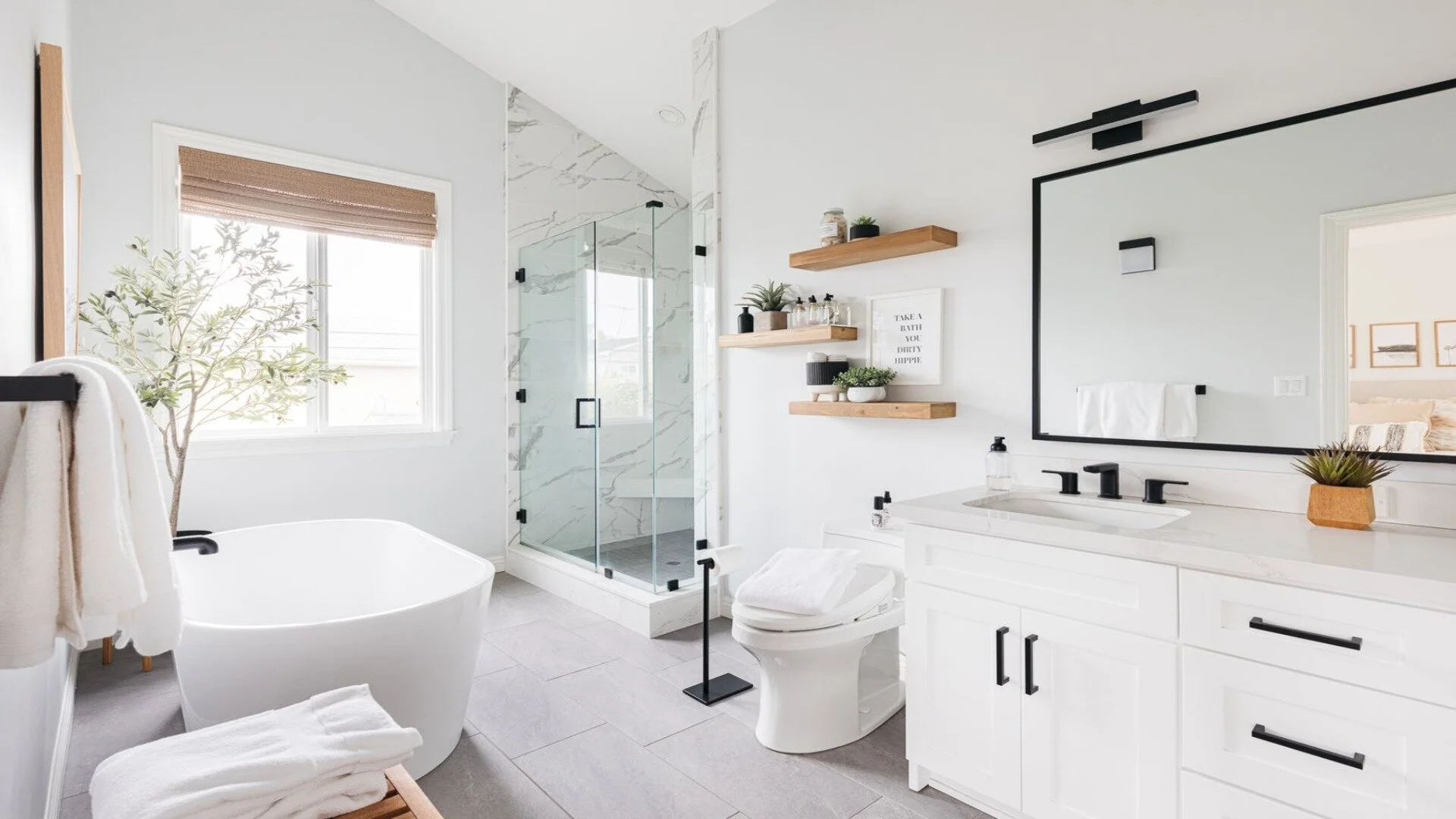
A bathroom remodel is one of the most rewarding home improvement projects you can undertake. Whether you’re upgrading outdated fixtures, improving functionality, or enhancing aesthetics, a bathroom remodel can significantly increase your home’s value and improve your daily life. However, it’s also a process that can be disruptive and complex. Knowing what to expect during a bathroom remodel helps you plan accordingly, manage stress, and ensure a successful transformation.
Why Remodel Your Bathroom?
Remodeling your bathroom is a powerful way to transform your home and elevate your lifestyle. Whether you’re dreaming of a luxury bathroom retreat or simply craving a modern upgrade, a bathroom remodel delivers both style and substance. Say goodbye to outdated tiles and cramped layouts—revamping your space boosts functionality, enhances comfort, and creates a stunning environment you’ll love. Even better, a well-executed bathroom renovation can dramatically increase your home’s value and appeal to future buyers. It’s not just a makeover—it’s a smart, strategic investment in your home’s beauty and performance.
Before diving into the process, it’s worth understanding why many homeowners choose to remodel their bathrooms:
- Increase home value
- Enhance energy efficiency
- Fix plumbing or structural issues
- Improve aesthetics and functionality
- Add modern features like heated floors or walk-in showers
Initial Consultation and Planning
Before any demolition or construction begins, the process kicks off with a detailed consultation. This is where homeowners share their vision, and contractors offer input based on feasibility, budget, and local code requirements.
What to Expect:
- Site visit and measurements
- Discussion about goals, style, and must-haves
- Ballpark cost estimate and timeline
- Professional advice on layout, materials, and upgrades
Demolition Phase in bathroom remodeling
The demolition phase in bathroom remodeling is a crucial step that involves removing old fixtures, tiles, and other outdated elements to make way for a fresh new design. Understanding what to expect and how to prepare for this phase can help ensure a smooth renovation process.
Initial Assessment and Planning
Before the demolition begins, it’s important to conduct a thorough assessment of the bathroom’s structure, plumbing, and electrical systems. This allows the contractor to identify any potential issues that might affect the project timeline or budget. Planning this phase carefully ensures that the process is as efficient as possible.
Preparing the Space
Prior to demolition, it’s essential to clear the bathroom of personal items, toiletries, and any movable fixtures. A skylinenyinc contractor will typically take steps to protect surrounding areas, such as covering the floor, walls, and any adjacent rooms, to minimize damage and dust during the process.
Removal of Old Fixtures and Materials
The demolition team will carefully remove all unwanted materials, such as tiles, cabinetry, sinks, bathtubs, and flooring. They will also disconnect plumbing and electrical connections, taking care to follow proper safety protocols. This process may involve tearing down walls or removing large fixtures that are beyond repair.
Construction Phase
The construction phase in bathroom remodeling is where the vision for your updated space starts to come to life. This phase involves a variety of tasks, including structural work, plumbing, electrical installations, and finishing touches. Understanding the steps involved and what to expect during the construction phase will help you stay informed and prepared throughout the renovation process.

Framing and Structural Work
If any walls need to be moved or new structures are required, the framing process begins. This may involve reinforcing existing walls, installing new studs, or making adjustments to the layout of the bathroom to accommodate new fixtures or space requirements. Framing ensures that the foundation for the new design is solid and supports all future installations.
Plumbing and Electrical Work
Once the framing is in place, the next step is to address plumbing and electrical systems. This includes installing new pipes for sinks, showers, bathtubs, and toilets, as well as upgrading or adding electrical wiring for lights, outlets, and ventilation fans. Any issues identified during the demolition phase, such as leaks or outdated wiring, are typically addressed during this phase to ensure the bathroom functions safely and efficiently.
Drywall and Surface Preparation
With the plumbing and electrical systems in place, drywall is installed to create smooth, even walls and ceilings. Once the drywall is up, it is taped, mudded, and sanded to provide a flawless surface. If your remodel involves a new shower or tub area, moisture-resistant backer board will also be installed to prepare for tiling.
Flooring Installation
The next step in the construction phase is flooring installation. Whether you’re choosing tile, vinyl, or another type of flooring, the subfloor is carefully prepared to ensure proper adhesion and long-term durability. Tiles are laid in a precise pattern, grout is applied, and the floor is sealed to prevent water damage.
Tiling and Backsplash
Tiling is a key element in many bathroom remodels, and it’s often completed after the flooring installation. This includes laying tiles on the walls, around the bathtub or shower, and on the backsplash areas. Precision is crucial here to ensure the tiles are evenly spaced, straight, and aesthetically pleasing. The grout is applied and sealed to protect the tiles from moisture.
Cabinetry and Fixture Installation
Once the tiling and flooring are in place, it’s time to install new cabinetry, countertops, sinks, and other fixtures. This includes mounting mirrors, installing vanities, and setting up any additional storage units. Fixtures such as faucets, showerheads, and lighting are also installed to complete the bathroom’s functionality and design.
Finishing Touches
The final steps in the construction phase include applying finishing touches such as paint, caulk, and sealing any gaps. This ensures that the bathroom is both functional and aesthetically cohesive. Small details, such as hardware for cabinets and towel bars, are installed, and any touch-ups to paint or grout are completed.
Conclusion
A bathroom remodel is a significant project that requires careful planning, realistic budgeting, and patience. By knowing what to expect at each phase, from demolition to the final touches, you can approach the process with confidence. Whether you’re doing a simple update or a full-scale renovation, the end result should be a space that enhances your lifestyle and adds value to your home.
With the right preparation and mindset, your bathroom remodel can be a smooth and rewarding experience. If you’re planning a remodel, contact us today to schedule a consultation and start your journey toward a beautifully designed space!


